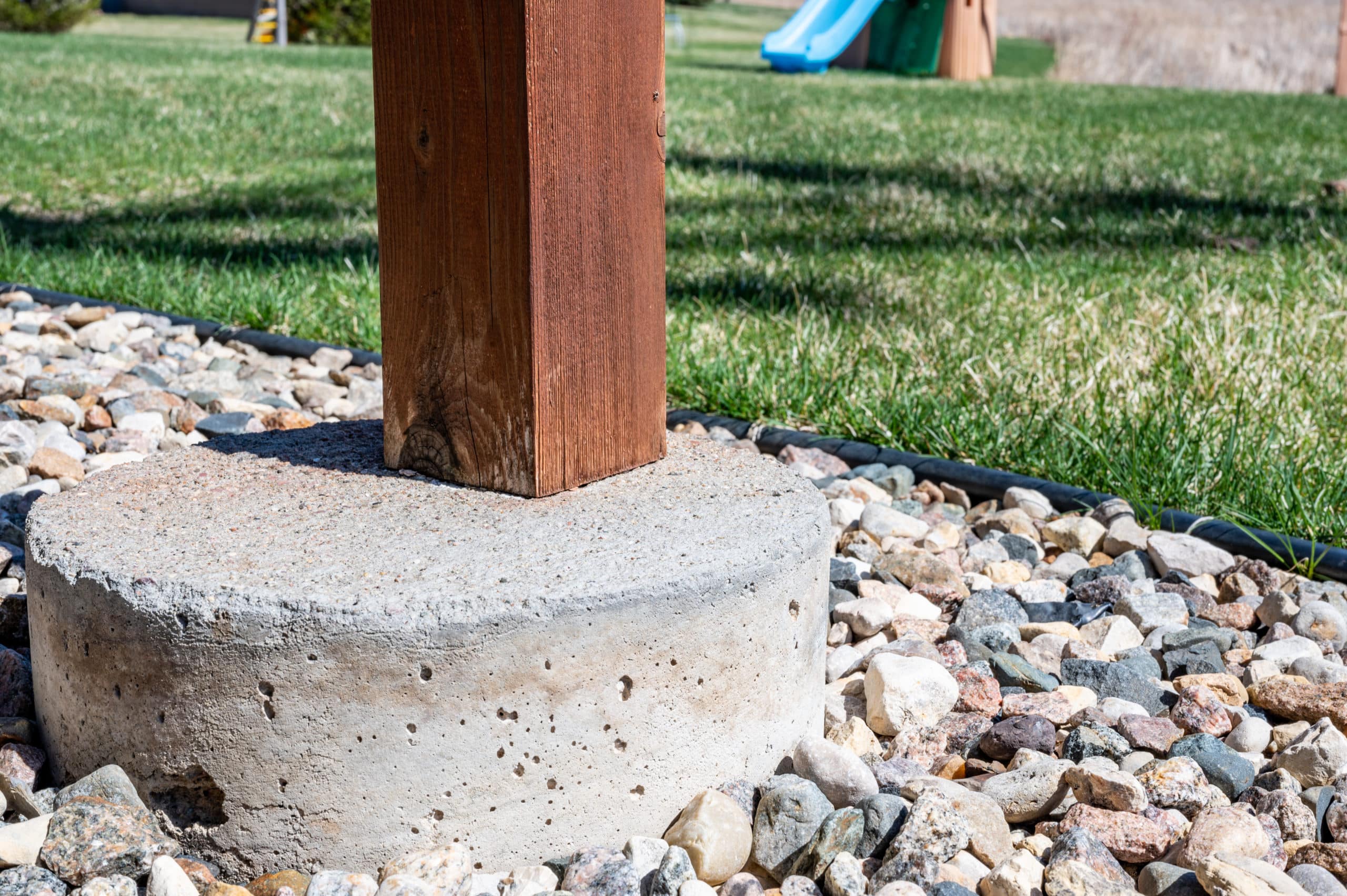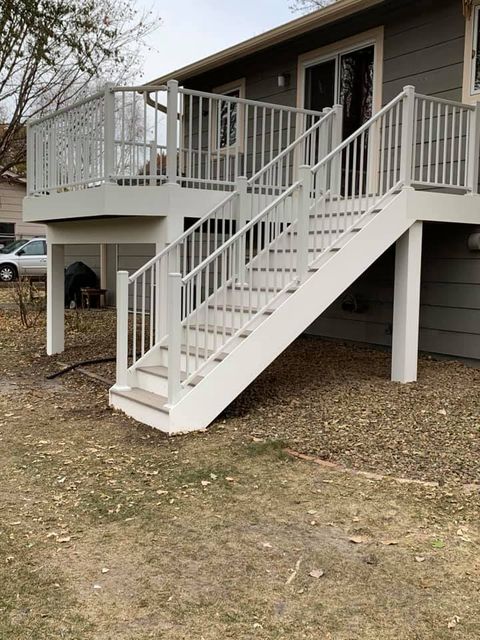Make Sure Stability and Durability With Effectively Mounted Deck Footings
Deck grounds may not be one of the most extravagant element of deck building and construction, but they play a crucial role in making certain stability and long life. Correctly mounted grounds offer a strong structure for your deck, preventing common problems like drooping, shifting, and even collapse. Choosing the best kind of ground and appropriately installing it can be a complex process. In this conversation, we will check out the value of correct deck grounds, factors to consider during setup, different types of grounds available, step-by-step setup guide, and maintenance suggestions for making sure resilient grounds. So, if you wish to ensure the stability and longevity of your deck, keep reading to discover the key insights to achieve a durable and structurally sound outdoor room.

Significance of Appropriate Deck Grounds
Why are properly installed deck footings vital for the security and long life of your deck? The answer depends on the fundamental role that deck footings play in supporting the weight of the entire structure. Deck footings are the foundation on which the deck relaxes, moving the tons from the deck to the ground. When footings are not correctly set up, it can cause a series of problems that endanger the security and durability of the deck.
Firstly, properly installed deck grounds disperse the weight of the deck equally, preventing any unequal settling or sinking. This is especially essential in areas with unpredictable dirt, as it assists to reduce the risk of the deck shifting or falling down. In addition, well-installed grounds guarantee that the deck remains degree, stopping any type of structural damages that can happen when a deck becomes irregular.
Second of all, appropriately installed grounds supply a solid support for the deck, avoiding excessive activity and sway. This aids to keep the architectural integrity of the deck, lowering the danger of accidents or injuries. It also decreases the deterioration on the deck, permitting it to stand up to the elements and regular usage for a longer period of time.
Aspects to Consider for Deck Ground Installation
When setting up deck footings, there are a number of important elements to take into consideration for correct installation. These variables can significantly influence the stability and durability of your deck. First and leading, you need to establish the sort of soil on which the deck will certainly be built. Various dirt kinds have different load-bearing capabilities, so it is essential to perform a soil test to make sure the grounds can support the weight of the deck and its residents. Furthermore, the area and layout of the deck ought to be very carefully intended to prevent any type of barriers such as trees, energy lines, or underground pipes. It is also crucial to take into consideration the neighborhood environment and climate condition, as these can influence the sturdiness of the footings. For example, regions with a high water table may need extra procedures to protect against water damages. The dimension and material of the footings ought to be chosen based on the size and weight of the deck, as well as the regional building codes and policies. By taking into consideration these elements, you can guarantee the proper installation of deck grounds and appreciate a secure and resilient deck.
Sorts Of Deck Grounds to Select From
There are numerous various kinds of deck footings readily available for you to select from. Each kind has its own benefits and downsides, dig this so it's necessary to consider your specific requirements and the conditions of your deck prior to choosing.
One typical kind of deck footing is the concrete ground. This entails digging holes in the ground and putting concrete right into them to produce a solid structure. Concrete grounds are sturdy and supply outstanding stability, making them ideal for decks in locations with difficult soil problems or high wind tons.
Another option is the helical pier footing, which is composed of a steel shaft with helical plates that are screwed into the ground. These footings fast to set up and can be used in numerous soil kinds, consisting of sandy or clay soils. They are likewise adjustable, permitting for simple leveling of the deck.
Sonotube grounds are another preferred option. These grounds are produced by placing a cardboard tube in an opening and filling it with concrete. Sonotube footings are reasonably simple to mount and supply adequate security for smaller decks or in locations with less requiring soil conditions.

When selecting the kind of deck ground, it's vital to take into consideration variables such as dirt problems, deck size and weight, regional building ordinance, and personal preferences. By choosing the proper ground type, you can guarantee the stability and longevity of your deck.
Step-by-Step Overview for Putting Up Deck Footings

Establish the location: Begin by noting the exact position of each ground using risks and string (Deck Footings). Consider any type of neighborhood building codes or policies relating to setback distances
Dig the openings: Make use of a post hole digger or an auger to dig the openings for the grounds. The depth will certainly rely on the frost line in your location and the sort of soil. Typically, a deepness of a minimum of 36 inches is advised for security.
Degree the openings: Make sure that all-time lows of the openings are degree (Deck Footings). This can be accomplished by making use of a degree or a straight board across the top of the holes
Add gravel: Place a layer of gravel at the end of each hole to improve drainage and prevent the footing from penetrating the dirt with time.
Put the footing forms: Place the footing forms into the holes, guaranteeing they are focused and degree. Use stakes to secure them in place.
Mix and pour concrete: Follow the directions on the concrete mix bag to prepare the concrete. Pour the concrete into the footing kinds, loading them entirely.
Smooth the surface area: Utilize a trowel to smooth the surface of the concrete and remove any kind of air pockets. Enable the concrete to treat according to the producer's instructions.
Maintenance Tips for Durable Deck Grounds
Proper upkeep is essential for making certain the durability and security of deck footings. By consistently examining and keeping your deck footings, you can stop damage and prospective safety threats.
Regular cleansing is additionally vital for keeping deck footings. Dirt, particles, and vegetation can gather around the footings, which can result in moisture accumulation and degeneration. Cleansing the footings routinely, utilizing a brush or a stress washer, can assist stop these concerns and extend the lifespan of your deck.
In addition to cleaning, it is very important to maintain the location around the grounds free from any kind of blockages. Stay clear of piling items against the footings or allowing plants to grow too close to them. These obstructions can trap moisture and cause the footings to weaken in time.
Last but not least, regular resealing of the grounds is advised to protect them from moisture and various other ecological variables. Using a water-proof sealer can aid protect against water damages and prolong the life expectancy of the grounds.
Conclusion
Finally, proper installation of deck grounds is critical for guaranteeing security and long life of your deck. Aspects such as soil type, tons ability, and regional building ordinance need to be considered when choosing the appropriate sort of deck footings. Complying with a step-by-step Continue guide for setup and regular maintenance will help to guarantee the grounds stay durable and lasting.
In this discussion, we will discover the value of proper deck grounds, aspects to think about throughout setup, different kinds of footings readily available, detailed installation overview, and maintenance pointers for guaranteeing resilient footings. Deck grounds are the foundation on which the deck relaxes, transferring the lots from the deck to the ground.One typical kind of deck footing is the concrete ground. Insert the ground forms: Put the footing forms right into the holes, guaranteeing they are centered and level.In conclusion, appropriate installment of deck footings is essential for making certain stability and long life of your deck.